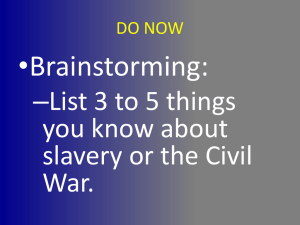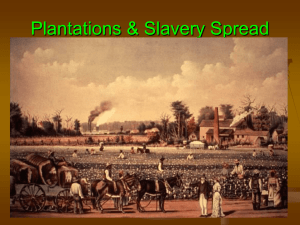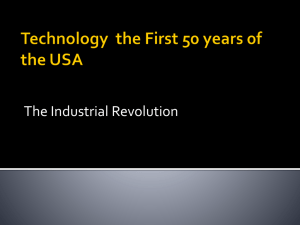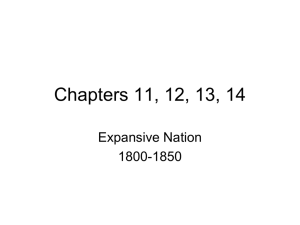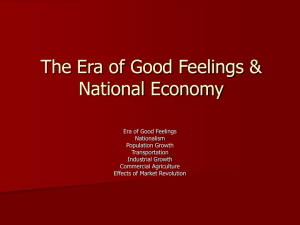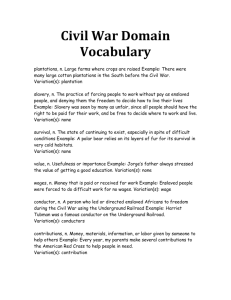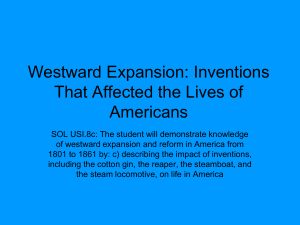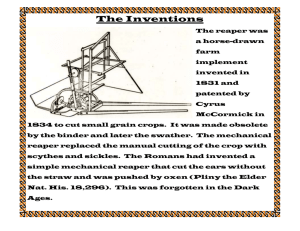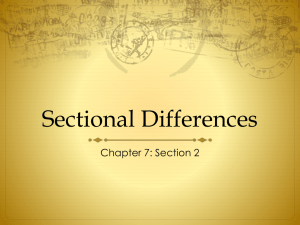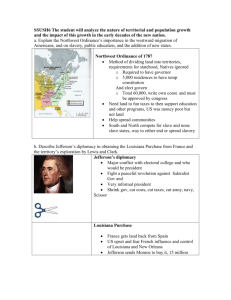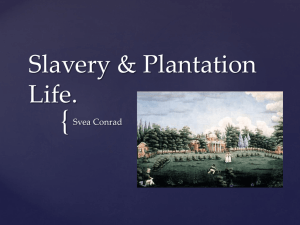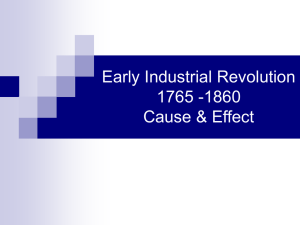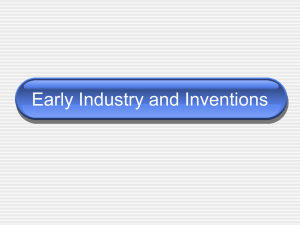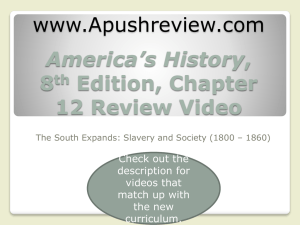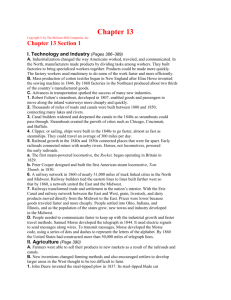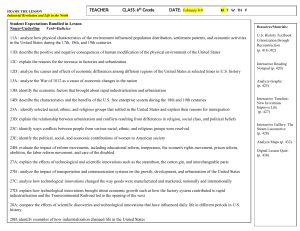chapter 11 - Crestwood Local Schools
advertisement
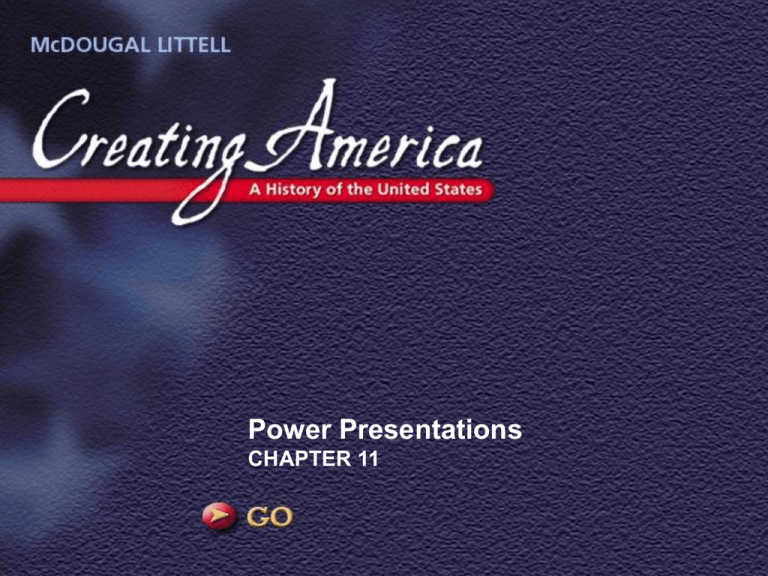
Power Presentations CHAPTER 11 Science and Technology Image From 1790 to 1840, you have seen an explosion of new inventions. These include the cotton gin, the steamboat, the steel plow, and the telegraph. You have also seen neighbors leave their farms to run machines in new factories. You sense that the country is changing. How will new inventions change your country? • What would it mean to be able to grow more grain and cotton? • What would it mean to communicate and travel more quickly? • How might it feel to do factory work instead of farm work? 1807 Robert Fulton launches a steamboat on the Hudson River. 1808 Congress bans the African slave trade. 1812 War of 1812 disrupts U.S. shipping. 1813 Weaving factory built in Waltham, Massachusetts. Image 1820 Missouri Compromise balances number of slave and free states. 1823 Monroe Doctrine issued. 1825 Erie Canal completed. 1831 Nat Turner leads slave rebellion in Virginia. To World 1844 Telegraph line connects Washington, D.C., and Baltimore. 1804 Haiti wins independence from France. 1815 Napoleon defeated at Waterloo. 1821 Peru and Mexico gain independence from Spain. 1825 First public railroad operates in England. 1833 Slavery is abolished in British Empire. 1839 Louis Daguerre is recognized for his photographic process. Back to U.S. Back to Home Main Idea New machines and factories changed the way people lived and worked in the late 1700s and early 1800s. Why It Matters Now The industrial development that began more than 200 years ago continues today. What were some new inventions of this period? When were they invented? How did they affect the United States? INVENTION DATE EFFECTS interchangable parts 1801 standardized goods steamboat 1807 improved river transportation steel plow 1836 increased food production telegraph 1837 increased communication • Why was New England a good place to build early factories? • What were working conditions like in Lowell mills? • How were different U.S. regions linked economically? Making Judgments How would you judge Samuel Slater and Francis Lowell, who brought secrets to the United States illegally? Think About • what they gained • how they affected the United States and England • what you believe about keeping technology secret Back to Home Main Idea The invention of the cotton gin and the demand for cotton caused slavery to spread in the South. Map Why It Matters Now The spread of slavery created lasting racial and sectional tensions. Who were the different groups of Southerners? What were they like? GROUP FACTS slaveholding whites Image one-third of population, large planters were powerful nonslaveholding whites small farms, supported slavery enslaved blacks one-third of the Southern population, variety of jobs free blacks 8 percent of blacks in the South, faced restrictions • How did the cotton gin lead to the spread of slavery? • How was life different for plantation slaves, city slaves, and free blacks in the South? • What were three ways that enslaved people resisted slavery? Drawing Conclusions Why do you think Southern whites reacted as they did to Nat Turner’s rebellion? Think About • Turner’s trial and hanging • the killings that followed the rebellion • the new laws that were passed Back to Home Main Idea Patriotic pride united the states, but tension between the North and South emerged. Why It Matters Now The tension led to the Civil War, and regional differences can still be found in the United States today. What contributed to national unity during the early 1800s? national bank protective tariffs road and canal systems NATIONAL UNITY strong federal government settled national boundaries Map • How did the Erie Canal help the nation grow? • How did the Missouri Compromise resolve a conflict between the North and South? • What was the main message of the Monroe Doctrine, and who was it directed toward? Recognizing Effects If the Supreme Court had decided differently in Gibbons v. Ogden or McCulloch v. Maryland, what might be one result today? Think About • if states could interfere with federal laws • if states controlled interstate commerce Back to Home REVIEW QUESTIONS ANSWERS: READ AND TAKE NOTES 1 How did the War of 1812 push the United States to build factories? 2 Why did its many rivers make the Northeast a good place to build early factories? 3 What was one effect of the steamboat? 4 How did interchangeable parts transform the manufacturing process? 5 Why did slavery spread in the South? 6 What were three hardships faced by enslaved people on plantations? 7 How did religion help people endure or resist slavery? 8 How did the Supreme Court’s ruling in McCulloch v. Maryland strengthen the federal government? 9 How did the United States gain the territory of Florida? 10 What were the terms of the Missouri Compromise? Analyzing Causes and Recognizing Effects CAUSES cotton gin, textile factories, farming advances, better transportation slavery, different economies, tariffs better communication, better transportation, economic cooperation, national currency, stronger federal government, territorial gains EFFECTS REGIONAL GROWTH SECTIONAL TENSIONS NATIONAL UNITY Back to Home These labels let you know where you are in the presentation. When you click on the arrow you will be linked to a related visual. Map Image These buttons link you to special areas. Use these buttons to go back to the previous slide, or to move forward in the presentation. To reveal the content of a slide just press the space bar or click your mouse once. To use a button, move your pointer over the button. When your pointer becomes a hand, click your mouse. Back to Previous
